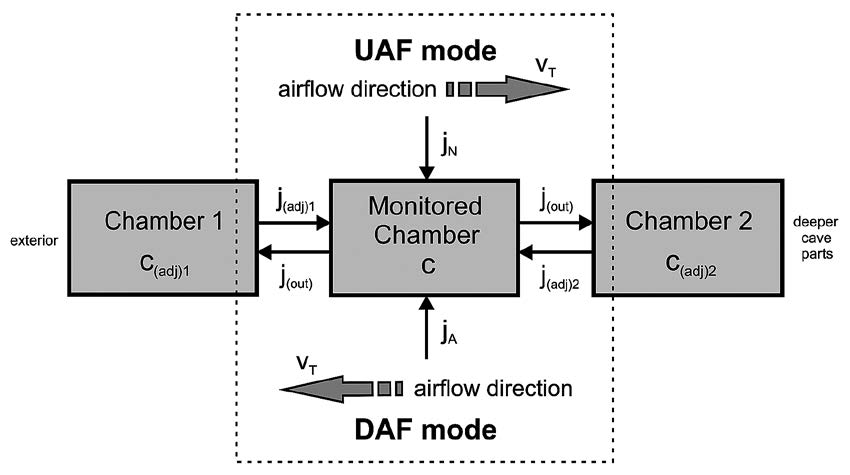A case study of anthropogenic impact on the CO2 levels in low-volume profile of the Balcarka Cave (Moravian Karst, Czech Republic)
DOI:
https://doi.org/10.3986/ac.v44i1.917Povzetek
Anthropogenic impact on CO2 levels was studied in the low-volume chamber connected with the low-profile corridor in Balcarka Cave, the show cave in Moravian Karst, during the period of limited ventilation. Modeling showed that the natural CO2 levels were controlled by the CO2 fluxes (up to ~ 3.14 × 10-2 mol s-1) from adjacent spaces. These fluxes changed with cave airflows and ventilation modes. Two main components of anthropogenic impact were recognized: (1) visitor breathing and (2) visitor movement. The CO2 input derived from individual visitor groups varied from 1.96 × 10-4 to 2.45 × 10-3 mol s-1, which was the significant part of the CO2 fluxes from adjacent spaces. The visitor movement induced the airflows up to 0.2 m3 s-1. They exceeded the natural airflows (up to 3.2 × 10-3 m3 s-1) by factor of more than 60. These airflows caused cave ventilation mode’s switching and, significant drop of CO2 fluxes/levels due to changed ventilation. The study therefore indicates that various anthropogenic influences in show cave can balance and neutralize each other, in dependence on cave morphology and seasonal conditions.
Prenosi

Prenosi
Objavljeno
Kako citirati
Številka
Rubrike
Licenca
Avtorji jamčijo, da je delo njihova avtorska stvaritev, da v njem niso kršene avtorske pravice tretjih oseb ali kake druge pravice. V primeru zahtevkov tretjih oseb se avtorji zavezujejo, da bodo varovali interese založnika ter da bodo povrnili morebitno škodo.
Podrobneje v rubriki: Prispevki




